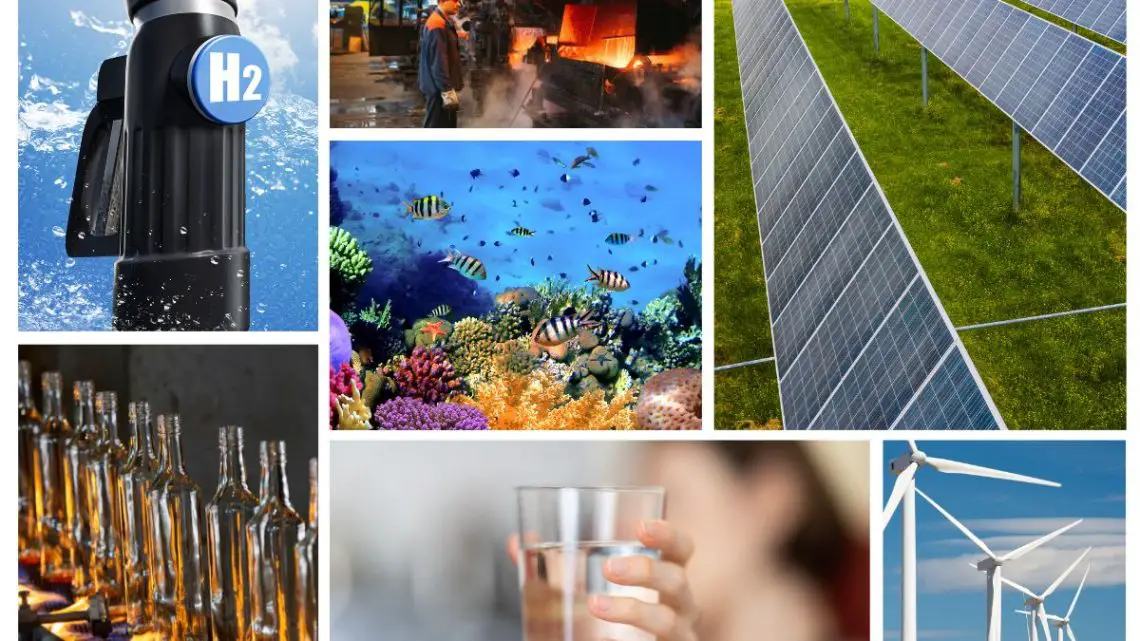
Green Hydrogen Production Diverse Impact on Energy, Industry and Marine Life
January 14, 2024The recent strides in green hydrogen production have brought about a sea change in our approach to sustainable energy. Not only does this process generate clean fuel, but also creates drinkable water and oxygen as valuable by-products. The latter has the potential to rejuvenate oxygen-deprived ‘dead zones’ in our oceans, thereby fostering biodiversity and ecological balance.
Harnessing the Oxygen By-product of Green Hydrogen Production: A Novel Approach to Reviving Dead Zones in the Ocean
Recent reports have underlined the transformative potential of the oxygen byproduct from green hydrogen production in addressing the crisis of dead zones in the Gulf of St Lawrence in Quebec. These oxygen-deprived saltwater areas, which have been a cause for concern for environmentalists and marine biologists alike, may soon witness a revival. This is due to the newfound application of the surplus oxygen from green hydrogen processes.

Red circles indicate many dead zones’ size and location (2008), with black dots representing those of unknown size. The quantity and scale of marine dead zones – oxygen-deprived areas inhospitable to sea life, save certain bacteria – have increased over the past fifty years.
Scientists and researchers have begun investigating the deployment of this oxygen in these regions, with the aim of replenishing oxygen levels, restoring aquatic life, and promoting ecological equilibrium.
Understanding the Genesis of the Gulf Dead Zone
The lifeless area in the Gulf of St. Lawrence is primarily caused by nutrient-induced oxygen depletion and altered ocean currents channeling oxygen-rich waters away from the Gulf. The lack of oxygen annihilates the living space for less mobile marine species like mussels and crabs and diminishes the habitat for others, rendering them susceptible to prey risks.
The Global Impact of Dead Zones
Dead zones, like the one in the Gulf of St. Lawrence, are far from being a localized issue. Instead, they represent a worldwide environmental concern. Globally, there are over 400 documented dead zones, spanning from the U.S. Gulf Coast to the Baltic Sea. Primarily caused by excessive nutrient pollution from human activities, these dead zones not only disrupt local ecosystems by depleting oxygen levels in the water but also threaten biodiversity at a global level.
How Green Hydrogen Could Revitalize the Gulf
Harnessing the power of green hydrogen could offer a potential solution for the oxygen depletion in the Gulf of St. Lawrence. Green hydrogen, produced by using renewable energy sources like wind or solar power to separate water into its base elements – hydrogen and oxygen, presents a two-fold advantage.
While the green hydrogen serves as a clean energy source, the oxygen byproduct has the potential to replenish the oxygen-starved zones in the Gulf. This supplementary oxygen may help reestablish the fragile ecological equilibrium, offering crucial support to the diverse marine life inhabiting the region.
At present, oceanographer Doug Wallace and his team are spearheading research to delve into the viability of using green hydrogen’s oxygen byproduct to revive the Gulf’s dead zones, in an endeavor that could have holistic benefits for our planet.
The Role of Stephenville in the Gulf Revitalization
Stephenville, a town located on the western coast of Newfoundland and Labrador, is poised to play a consequential role in the Gulf of St. Lawrence’s rejuvenation. Given its close proximity to the Gulf and a strong commitment to environmental initiatives, Stephenville is an ideal base for green hydrogen production sites.
Capitalizing on the area’s existing infrastructure and the community’s environmental consciousness, the implementation of hydrogen production facilities could not only aid in the mitigation of the Gulf’s oxygen deficit, but also stimulate local economic growth, creating job opportunities and fostering a sustainable future for the region.
Potential and Pitfalls of the Proposed Solution
The concept of pumping large volumes of oxygen into the deep sea is compelling, but feasibility and possible repercussions are yet to be fully understood. The researchers concede the necessity for additional study looking into the engineering, financial, and scientific dimensions. The impact on marine life along with the exploration of distinct injection methodologies could potentially be investigated at viable testing locations like the Bedford Basin in Halifax.
Previous Testing and Forthcoming Solutions
A test was carried out in October 2021, which entailed the release of an inert gas at a depth of 250 meters in the Cabot Strait, located south of Stephenville, N.L. The tracer used in the test gave insights into the sub-surface water’s mixing and distribution patterns, suggesting that injected oxygen could reach affected areas within a time span of 18 months to four years. With plans underway, Stephenville could become a viable oxygen source due to its initiatives to establish wind-powered hydrogen and ammonia production projects.
Final Thoughts
The byproducts of green hydrogen production could play a pivotal role in preserving our planet and advancing sustainable technologies. Green hydrogen—produced by harnessing renewable energy sources such as wind or solar power to split water into its fundamental elements, hydrogen and oxygen—offers a multitude of benefits.
- The hydrogen serves as a clean energy source, powering vehicles and transportation systems, and providing green energy for hard-to-decarbonize industries, thereby contributing to carbon neutrality.
- Simultaneously, the oxygen byproduct can be utilized in industries requiring high oxygen levels and could even be injected into oxygen-deprived zones of oceans, helping revive marine ecosystems.
- Furthermore, the process of electrolysis involved in green hydrogen production results in potable water as a byproduct, potentially offering a solution to water scarcity.
Thus, green hydrogen production is much more than a clean energy solution; it’s a multifaceted approach to environmental sustainability and resource conservation.



 HFN News is your leading source for fresh hydrogen and renewable energy updates. Amid the fast-paced growth of hydrogen companies, we provide top-notch news and insights about this exciting sector. Our coverage spans from hydrogen cars to global sustainable initiatives, and we highlight the latest in green jobs and developing hydrogen hubs. We invite you to share your local hydrogen news and explore today’s renewable energy job listings on our site. Thanks for choosing HFN News as your trusted guide to the hydrogen and renewable energy world!
HFN News is your leading source for fresh hydrogen and renewable energy updates. Amid the fast-paced growth of hydrogen companies, we provide top-notch news and insights about this exciting sector. Our coverage spans from hydrogen cars to global sustainable initiatives, and we highlight the latest in green jobs and developing hydrogen hubs. We invite you to share your local hydrogen news and explore today’s renewable energy job listings on our site. Thanks for choosing HFN News as your trusted guide to the hydrogen and renewable energy world!
Enjoy hearing about all the uses of hydrogen, never gave it a thought before finding your site.
Thanks.